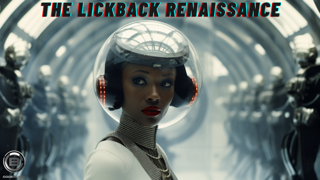Codeblack Films Signs Up For Pixability’s Inclusive Media Initiative
Pixabilty aims to grow the ad dollars flowing to entertainment company’s YouTube channel

After helping to start the Inclusive Media Initiative, to help brands back diverse YouTube creators with their ad dollars, Pixabiilty sees Hollywood looking for ways to grab more online video dollars.
Codeblack Films has joined the initiative and Pixibility is helping the diverse content distribution and marketing company relaunch its YouTube channel in time for Black History Month.
Codeblack, a producer and distributor of urban and pop culture entertainment with $100 million in theatrical revenue and$750 million in home entertainment revenue, was founded by producer Jeff Clanagan, who is also president and chief distribution officer of HartBeat, Kevin Hart’s media company.
Since launching the Inclusive Media Initiative with YouTube and Whalar in October, membership has swelled from 200 members to 1,300, Pixability CMPO Matt Duffy told Broadcasting+Cable.
What has been even more interesting is that “we’re getting more and more Hollywood companies coming to us, saying we need to figure out YouTube.,” Duffy said.

Before the pandemic, a YouTube channel was a place where studios and media companies posted content. Now, with theater box offices still not doing the business they used to do “they’re thinking of YouTube from a monetization angle . . . another way of making money from movies.”
Those trailers and celebrity interviews–even old ones–generate a lot of traffic on YouTube and Pixability can help them attract ad dollars, particularly if they’re from minority-owned companies and diverse creators.
The smarter way to stay on top of broadcasting and cable industry. Sign up below
Many marketers and media agencies have goals to support diverse communities with ad dollars.
“Very simply there's no way for big brands and agencies who want to support diverse creators to do so on YouTube before we launched this initiative because they would have no way of knowing which diverse communities creators represented,” Duffy said. “We were getting more and more requests from Kellogg’s and other huge brands we work with for a list of creators that belong to a community they wanted to support. We would say, no one can do that.”
The initiative invited creators to identify themselves and the communities they serve. “Then when a big brand comes to us and says ‘I’d like to support creators in this community, we know which ones they can target ads towards,” Duffy said.
The data goes into programmatic systems, giving creators access to ad dollars placed that way.
Duffy says that two years ago almost no programmatic ad requests specified a preference for minority creators on YouTube. Today its about a third, heading towards 50%, he said.
Being in the programmatic bid stream has also meant more demand and higher prices for those minority creators, according to Duffy.
PIxability’s main business is helping clients place their ads in safe and suitable environments on YouTube, but the initiative gives Pixabilty another way to help clients but enabling them to allocate a portion of their ad spending to communities they want to support.
“If you’re a giant brand and you’re spending million on YouTube and and none of those millions are going towards the diverse communities they’re trying to support, it’s frustrating,” Duffy said.
Duffy said there’s no obligation for creators joining the initiative. When buys are made, Pixability takes a small commission, which is paid for by the agency and not the creator.
“We’re not making a lot of money from this specifically, Duffy said.
Pixability sees a more lucrative business in helping Hollywood companies manage their YouTube channels, which is what Pixability is doing for Codeblack.
Codeblack wants Pixability to grow its YouTube channel and make it into a major distribution arm.
Unlike most traditional movie companies, Codeblack works with creators of color from around the world who make their content using artificial intelligence, removing the need for an expensive studio, and put that content online instead of distributing it through theaters.
“Hollywood is experiencing a huge shift where every producer should have an AI content strategy and YouTube distribution strategy,” said Clanagan.
This month, the AI videos uploaded this month have generated more than1 million views, and the channel has experienced a 431% growth rate with 2,000 new subscribers, thanks to its shift to feature videos from independent creators, he said.
Codeblack plans to triple the AI-produce content available on its channel.
“In the same way YouTube has made every creator a publisher, it can also make every publisher a movie studio,” Clanagan said. “The relaunch of the Codeblack channel for Black History Month represents the beginning of what we expect will be huge growth on YouTube, and we knew that being a part of the Inclusive Media Initiative had to be a part of that to provide our creators with the monetization opportunities they deserve.”
While Codeblack is a pioneer, Duffy sees more businesses following suit.
“We've had other Hollywood companies come to us recently saying ‘we need to know how to distribute on YouTube because it's now a distribution arm for us that's critical,’” he said.
“We’re not YouTube experts, we’re Hollywood experts,” they tell Duffy. “We know how to make movies, we don’t know how to monetize on YouTube.”
Jon has been business editor of Broadcasting+Cable since 2010. He focuses on revenue-generating activities, including advertising and distribution, as well as executive intrigue and merger and acquisition activity. Just about any story is fair game, if a dollar sign can make its way into the article. Before B+C, Jon covered the industry for TVWeek, Cable World, Electronic Media, Advertising Age and The New York Post. A native New Yorker, Jon is hiding in plain sight in the suburbs of Chicago.

